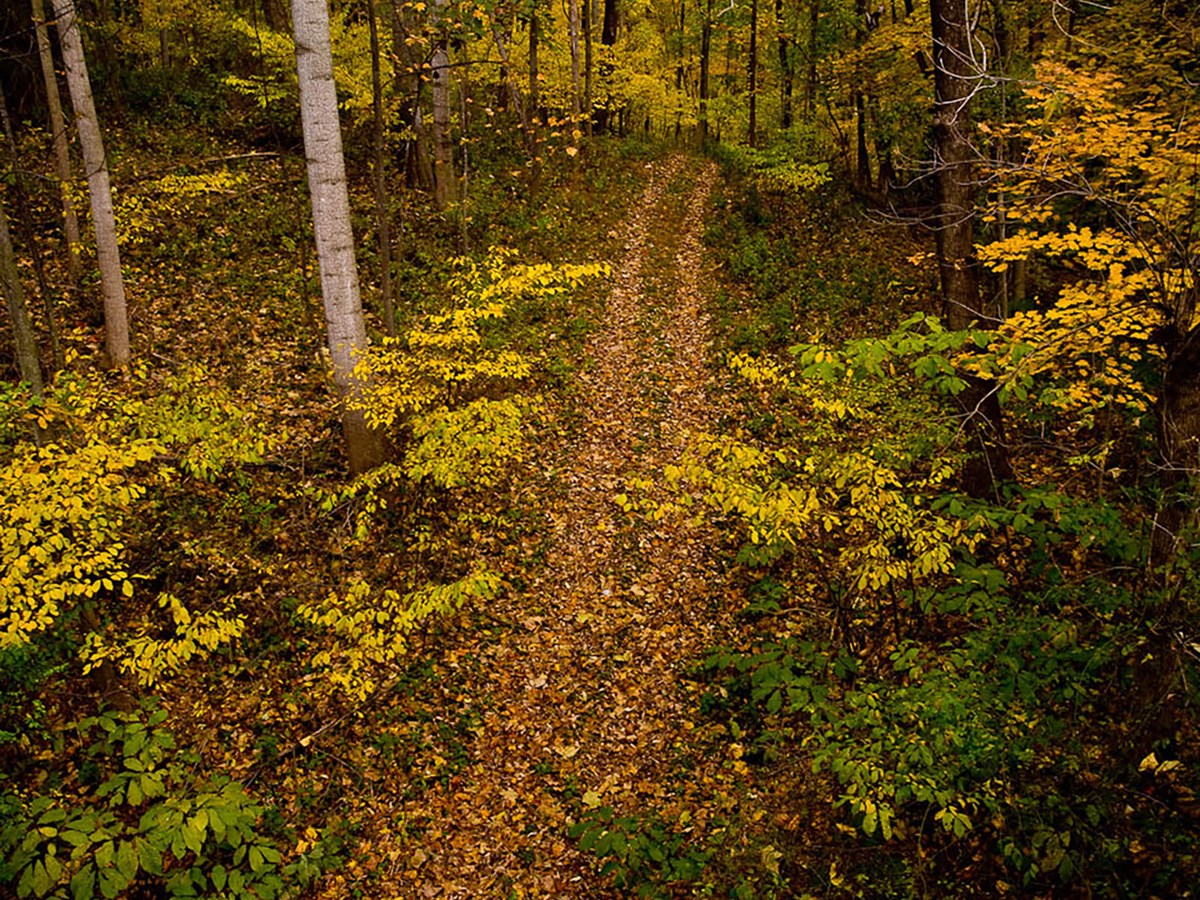Deciduous forests, with their vibrant seasonal displays and diverse ecosystems, are a cornerstone of our planet's biodiversity. These majestic woodlands, teeming with life, are a testament to nature's remarkable ability to adapt and thrive in a world of changing seasons.
Unlike their evergreen counterparts, deciduous trees shed their leaves in a spectacular display of color each autumn. This adaptation is a strategic response to the colder temperatures and reduced sunlight of winter. By discarding their leaves, deciduous trees conserve valuable resources and minimize water loss during harsh conditions.
Deciduous forests are often characterized by a distinct vertical structure:
- The Canopy: Towering above the forest floor, the canopy is formed by the interlocking crowns of mature trees. This layer acts like a giant umbrella, filtering sunlight and creating a dappled light effect on the forest floor below.
- The Understory: Below the dense canopy lies the understory, a layer of shade-tolerant shrubs and small trees. This zone provides vital habitat for smaller animals and birds.
- The Forest Floor: Carpeted with fallen leaves, decaying wood, and vibrant spring wildflowers, the forest floor is a haven for decomposers, fungi, and a variety of small mammals and insects.
As winter loosens its grip and spring paints the world in shades of green, deciduous forests awaken from their slumber. Buds on the once-bare branches swell and burst forth with new leaves, fueled by the returning warmth and sunlight. Ferns unfurl their delicate fronds, and a vibrant carpet of wildflowers emerges on the forest floor, creating a breathtaking display of nature's renewal.
Deciduous forests are teeming with life, each organism playing a crucial role in the intricate web of the ecosystem. Here's a glimpse into the dynamic food chain that sustains this vibrant community:
- Producers: Leaves, acting as solar panels, capture sunlight and convert it into energy through photosynthesis. This creates the foundation of the food chain.
- Primary Consumers: Caterpillars, insects, and other herbivores munch on leaves, transferring the energy captured by plants to their bodies.
- Secondary Consumers: Birds, particularly during spring when they feed their chicks, prey on caterpillars and other insects, consuming the energy stored in the herbivores.
- Tertiary Consumers: Predators like foxes occupy the top of the food chain, hunting birds, small mammals, and other creatures, keeping populations in check.
Autumn's Palette: A Farewell to Summer
As summer wanes and days shorten, deciduous forests undergo a remarkable transformation. The green leaves begin to lose their chlorophyll, the pigment responsible for their vibrant color. This reveals a hidden array of pigments like carotenoids and anthocyanins, resulting in the breathtaking display of yellows, oranges, reds, and purples that characterize autumn. This visual spectacle is not merely aesthetic; it's a signal for trees to prepare for winter by withdrawing nutrients from their leaves before they fall.
The value of deciduous forests extends far beyond their breathtaking beauty. These ecosystems play a critical role in maintaining the health of our planet:
- Habitat Havens: Deciduous forests provide vital habitat for a diverse range of animals, from towering trees that shelter birds and squirrels to the intricate world of decomposers thriving on the forest floor.
- Climate Regulators: Trees act as carbon sinks, absorbing carbon dioxide, a greenhouse gas, from the atmosphere. This helps to mitigate the effects of climate change.
- Water Sentinels: The root systems of trees in deciduous forests help to hold soil in place, preventing erosion and promoting water infiltration. This ensures clean water supplies for downstream communities and ecosystems. Additionally, healthy forests act like giant sponges, absorbing rainwater and slowly releasing it, helping to regulate stream flow and prevent floods.
Deciduous forests are a vital part of our planet's natural heritage. These remarkable ecosystems, appreciating their beauty and ecological significance, and taking action to protect them, we can ensure that future generations can continue to experience the wonder and magic of these vibrant woodlands.
Tags:
Science

